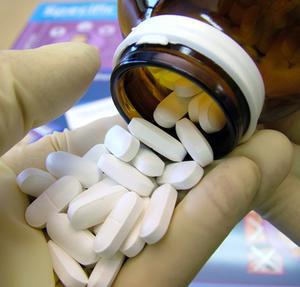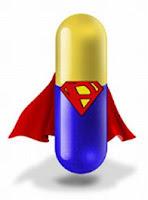 One of the major obstacles to recovery are the cravings
One of the major obstacles to recovery are the cravings
One of the major obstacles to recovery for addicts, whether they are hooked on drugs, alcohol, or both, is handling the cravings that come with not using. In some cases, the cravings are so strong that they outweigh the desire to stop using, making it nearly impossible to live a clean and sober life. However, some doctors are prescribing medication that could effectively reduce – or even eliminate – cravings for alcohol and opiate drugs, like prescription drugs and heroin.
In clinical trials of the opioid blocker naltrexone, marketed under the names Revia, Depade, and Vivitrol, patients saw a significant reduction in cravings for alcohol, and the effects of opiates were completely blocked by the drugs. Although naltrexone has been used to treat alcohol and drug dependency for some time – it was approved for alcoholism in 1995 – it wasn’t until October 2010 that the FDA approved the use of Vivitrol to treat opiate addiction.
Does it Work?
While scientists do not completely understand how naltrexone blocks alcohol cravings, studies have indicated that patients who take the drug report fewer cravings, fewer drinking days and fewer relapses. It does not block the effects of alcohol, though – meaning that if a patient does slip and drink while taking the drug, he or she will still experience some of the effects of alcohol, although the desire to keep drinking will be significantly reduced.
Studies do show, however, that naltrexone effectively blocks the effects of opiate drugs, making cravings for the drugs nearly nonexistent. Opiate addicts can only take the drug after going through withdrawal, and have gone at least 7-10 days without any opiates in the system. If the patient has opiates in the system, potentially harmful side effects could occur.

It's no Superpill
Naltrexone is not a “magic pill” though. Simply taking a dose will not end chemical dependency forever, without going through the rest of the recovery process. Naltrexone medications are most effective when administered in conjunction with additional physical and psychological treatment, including therapy and rehabilitation services.The drug also works best when it’s administered in a controlled environment, such as a rehabilitation center or in an outpatient clinic setting, as studies have shown that when addicts attempt to self-administer the drug, they have a higher risk of relapse.
The amount of naltrexone prescribed, and the frequency of doses, varies according to the patient and the addiction being treated.
Studies indicate that alcoholics who take 50mg per day for about three months have the highest level of success. In the case of those addicted to opiates, a more flexible approach to dosing has been proven effective; most patients receive an average of 50mg of naltrexone each day, either administered daily, or in intervals of 100 or 150 mg every 2-3 days. The length of treatment varies according to the individual patient’s rehabilitation progress.
Side Effects
Unlike other drugs used to treat addiction, naltrexone is not habit forming, and stopping the medication suddenly will not cause withdrawal symptoms. In fact, other than the changes in addictive behavior, patients rarely know that they are even taking a drug – and it does not prevent the patient from experiencing pleasure outside of their addiction. Some patients do report side effects, including nausea, headache, fatigue or sleepiness, insomnia and anxiety, and the drug can cause liver damage. Patients considering taking naltrexone undergo extensive medical testing before beginning treatment to rule out liver or kidney problems that could be worsened with treatment. Naltrexone is also unsafe during pregnancy.
Naltrexone is only an effective treatment for – and approved to treat – alcoholism and opiate addiction. It is not an effective part of a treatment plan for addiction to narcotics such as cocaine or methamphetamines.
Battling a drug or alcohol addiction is not an easy fight. No matter how the addict chooses to get sober, the process is long and challenging. Drugs like naltrexone are simply a part of the treatment plan, one designed to improve the chances of success and long-term recovery. Combined with a comprehensive plan to address the psychological issues associated with addiction, proper physical care and behavioral modification and a strong support system, naltrexone-based treatment can help an addict stay on the road to lifelong sobriety.
Written By: Gregg Gustafson
Gregg Gustafson is a freelance writer and consultant for Drug-Rehab.org. Gustafson works with individuals who suffer from alcohol abuse, in turn referring them to some of the most prestige alcohol addiction centers active today.
Please help circulate this article... go on, click the f Like and +1 bellow!


